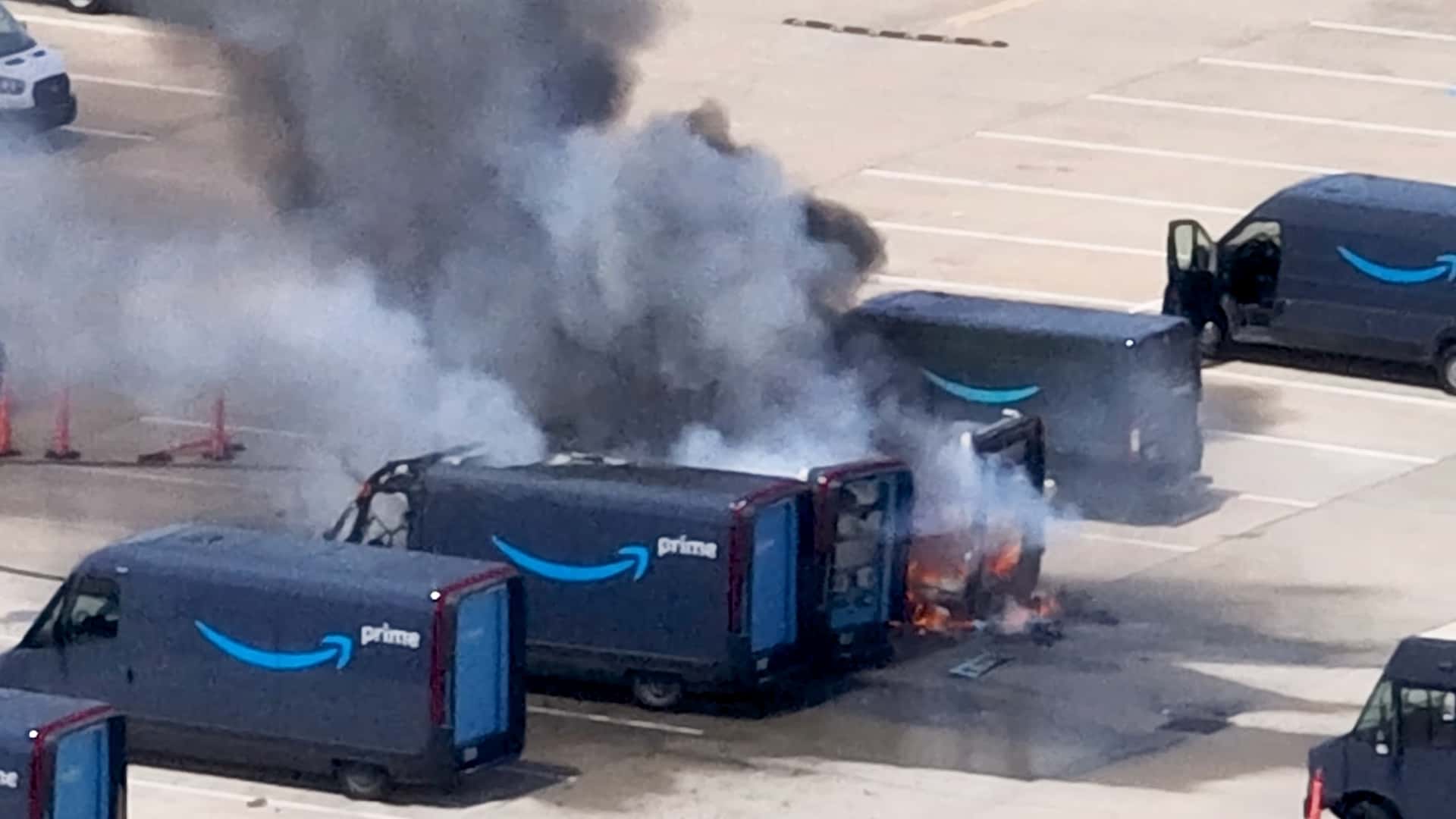
AMAZON ELECTRIC VANS IGNITE IN HOUSTON HEAT. RIVIAN RULES OUT BATTERY FAULT
The Fourth of July week didn’t go as planned for three Rivian Amazon electric delivery vans in Houston.
Electric vehicle fires are rare, but they quickly make headlines due to the new technology and ongoing public education about EV safety. A recent incident that caught our attention involved three Rivian Amazon Electric Delivery Vans (EDVs) bursting into flames at an Amazon fulfillment center in Houston, Texas, this week.
For starters, Amazon is using thousands of EDVs made by Rivian to cut its emissions. The fleet is quickly expanding and they're already all over the U.S. The footage of the EDVs catching fire was captured by drone operator Third Coast Drone on July 1 and first reported by Gizmodo.
In the video above, you can see a large parking lot with tens of EDVs and some are plugged in for charging. The maximum temperature that day had reached almost 100 degrees Fahrenheit as the scorching summer heat wave continues to affect several U.S. states.
The drone operator saw plumes of toxic black smoke rising towards the sky from one Rivian EDV first and then the fire spread to two other EDVs parked adjacent.
“We are aware of the incident and are investigating the situation,” a Rivian spokesperson told InsideEVs. “There were no injuries. As we are gathering information, it’s too soon to say what might have caused this thermal event.”
"We’re grateful no one was injured and are thankful for the Houston Fire Department’s rapid response," Amazon said in a statement. "We’re working with a third-party investigator and experts from Rivian to investigate and are not going to speculate, so we won’t be sharing additional details until we’re confident in the facts."
Some immediate safety precautions have also been taken at the site. The chargers connected to the damaged circuit panel board have all been turned off. Amazon electrical engineers and a high-voltage specialist determined that the rest of the chargers at the site were safe to use.
Studies have shown that EVs catch fire a lot less compared to combustion engine vehicles. In the rare instances when they do, the fires are dramatic and excruciatingly difficult to douse. That’s in part because the lithium-ion battery is extremely flammable.
“There were a few vehicles impacted by the incident, but the thermal event propagated from the source to surrounding vehicles,” Rivian said. “This vehicle was plugged into the charger, but it was not charging when the incident occurred. The HV battery was not the initiator of the incident,” the spokesperson added.
In the video above, you can see firefighters struggling to extinguish the flames, but it continues to rage on, showcasing the challenges first responders face due to thermal runaway—a phenomenon where lithium-ion battery cells enter an uncontrollable, self-heating and oxygen-creating state and the pack continues to reignite until there's nothing left to burn.
Modern-day lithium-ion batteries have come a long way in terms of fire safety. The U.S. doesn’t seem to have a repository of EV-related fire incidents, but Norway found that ICE-powered vehicles are four to five times more likely to catch fires. Another study in Sweden found that all non-EV fuel types produced 68 fires per 100,000 vehicles compared to 3.8 fires per 100,000 vehicles for EVs.
That doesn't mean things can't go terribly wrong. Using non-certified batteries, irregular charging patterns, damage to the battery pack and extreme heat have all been linked to fires in EVs.
More EV Fire News
2024-07-04T17:22:52Z dg43tfdfdgfd